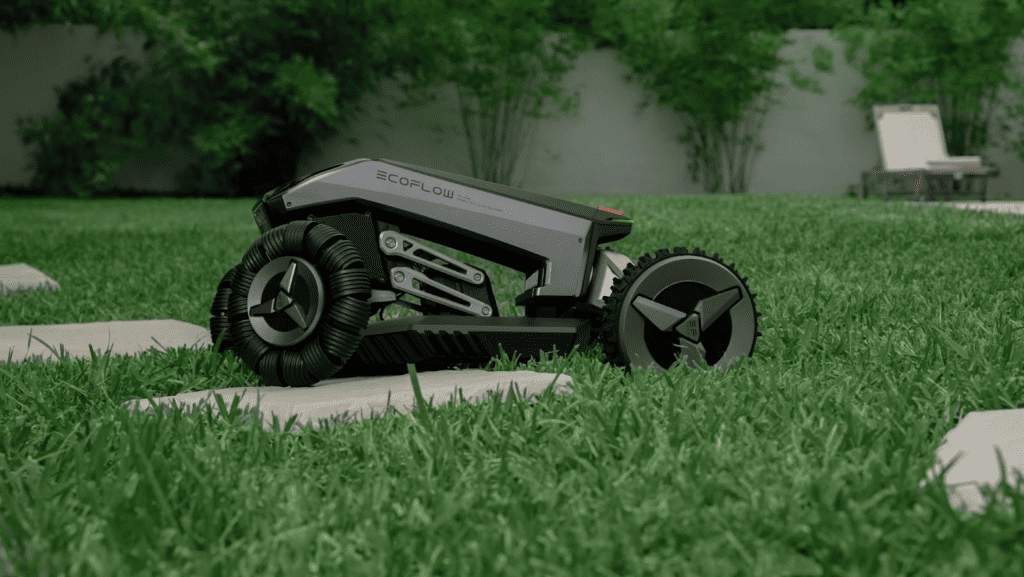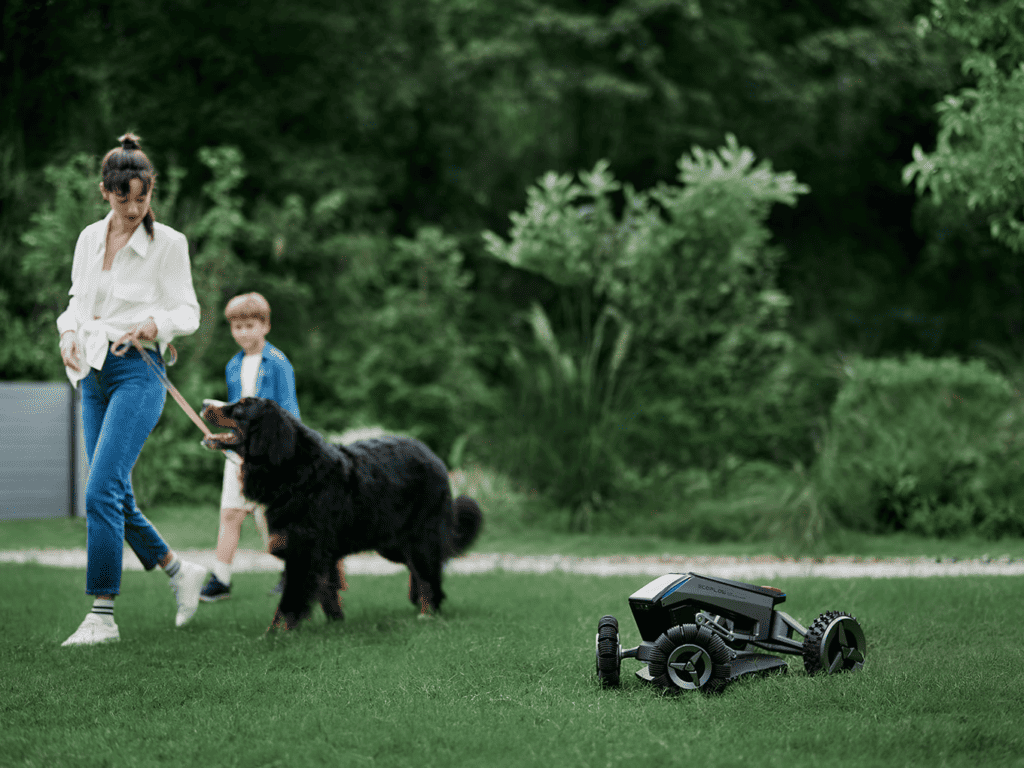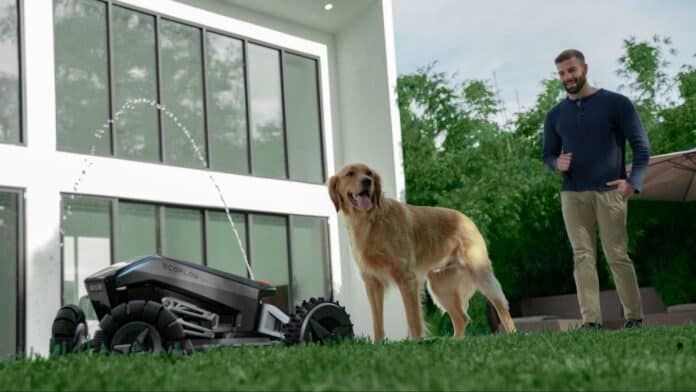Robot mowers are becoming increasingly popular, joining a slew of intelligent appliances and devices offering convenience, sustainability, and smart technology.
But for all their growing popularity, many people still want to know: How effective are they?
This question frequently arises—it almost sounds too good to be true.
The good news?
It’s not.
Robot lawn mowers have numerous advantages over traditional mowers. You can find the best model for you by examining several critical factors.
Here’s what you need to know about robotic lawnmowers and how well they work.

How Do Robotic Lawn Mowers Work?
Robotic lawnmowers utilize a variety of advanced technologies to maintain lawns efficiently.
Older robot mowers rely on physical barriers like perimeter wires.
The latest innovations let you go wire-free using cutting-edge technologies like GPS, LiDAR, visual sensors, or cameras to map out the yard and mow efficiently.
Some can even trim your grass around the yard’s edges — areas traditionally out of reach for robots.
Virtual boundaries help mowers avoid areas like garden beds or mulched landscaping areas. Robotic mowers can also automatically avoid obstacles like trees, boulders — and even dogs! They can also detect deviations from their programmed route and course-correct.
The latest robotic mowers even have intelligent features like detecting rain and automatically returning to their docking station until the rain stops.
Robotic lawn mowers that use a perimeter wire will stay within their designated physical boundaries. The perimeter wire sends signals to the mower telling it where it can and cannot go.
However, there are several downfalls to the perimeter wire approach. Aboveground wires present a tripping hazard, the cables are easy to damage, and mowing patterns are typically random and inefficient.

Award-winning innovations like EcoFlow BLADE Robotic Lawn Mower utilize cutting-edge tech like LiDAR, visual sensors, and artificial intelligence (AI).
EcoFlow BLADE offers a far more efficient modern alternative to the already-dated perimeter wire approach. Using X-Vision and virtual boundaries to delineate the mowing area and intelligent technologies to create optimized mowing patterns, EcoFlow BLADE wins this robot war. Hands down.

What Are the Advantages of Using a Robotic Lawnmower?
The biggest and best benefit of using a robotic lawnmower is clear: you don’t have to do it yourself. You also won’t need expensive and unreliable landscapers traipsing around your yard.
Smart technology makes automated lawn mowing effortless, freeing up your schedule for more important things. With an automated lawn mowing routine, you’ll be amazed at how healthy and trim your lawn looks with virtually zero effort from you.
Zero Labor Involved
Robotic mowers can work any day, any time, so that you can save time and energy — no more valuable weekend hours spent covered in grass clippings.
With a smart robotic lawn mower, you don’t have to worry about the manual labor of pushing a lawnmower around your yard or dealing with a loud gas engine.
Just set it up once and let it go!
If your mower can schedule its cuts and return to its charger without your intervention, it can be a truly hands-off experience — Just one of the many benefits EcoFlow’s EcoFlow BLADE offers.
Less Pollution
Traditional gas-powered lawn mowers produce a lot of emissions. As much as a car, in fact. Gas mowers are incredibly inefficient and contribute to 242 million tons of pollutants each year.
Like it or not, gas mowers will soon be a thing of the past. California has already banned the sale of gas-powered mowers as of 2024 — and many other states are likely to follow suit.
By contrast, robotic mowers are powered by electricity and generate no greenhouse gas emissions during operation. Just plug them back into their charging station or use a portable power station to recharge when the batteries run out.
Safer
Modern robotic mowers are safer than traditional or first-generation robot lawn mowers. They feature sensors, cameras, and other safety features that help prevent them from running into people or pets. And safety locks to stop kids from using them without adult supervision.
In addition, since robotic mowers perform their work without manual intervention, you’ll no longer have to worry about the safety risks, such as hand injuries, associated with manually pushing a lawnmower across your yard.
Healthier-Looking Lawn
Robotic mowers cut grass much better than you can with a manual lawn mower, producing a healthier lawn. They use advanced sensors and cameras to detect where the grass is growing, and precision engineering provides a more even cut.
Thanks to grasscycling, the cuttings from your lawn will help it stay greener and healthier for longer.
Cost Savings
Robotic mowers are an investment, but they can offer long-term cost savings that make them a wise investment. They require less maintenance than traditional lawnmowers, meaning no oil or spark plugs to change — and there are no gasoline costs or pollution.
You’ll be able to save money in the long run — and time right away!
If you’re deciding between a robot mower and a landscaping service, it’s a huge savings opportunity. Lawn services can cost hundreds of dollars monthly. A robot mower requires one up-front investment — and no ongoing costs except minimal electricity fees.
Quiet Experience
Robotic mowers are much quieter than gas-powered ones, providing a peaceful, hands-off lawn mowing experience.

Compared to gas-powered mowers, robot mowers are nearly silent.
The EcoFlow BLADE has a noise level of less than 62 dB, barely louder than a quiet conversation. A gas-powered riding mower can produce over 90 decibels of noise when operating — similar in volume to a DJ at a school dance and slightly less musical.
Because of EcoFlow BLADE’s whisper-quiet operation, you can even schedule EcoFlow BLADE to mow at night and make the lawn cutting process as non-intrusive as possible.
It’s a win-win for you and your neighbors!

Factors to Consider Before Buying a Robotic Mower
When robot mowers first hit the market, there weren’t many options available to consumers.
Today, it’s quite the opposite.
There are so many options to choose from that deciding which model is right for your lawn can feel overwhelming.
Here’s what to keep in mind while making your decision.
- Budget—How much can you realistically spend on a robotic mower? Robotic mowers come in a variety of sizes and features. The cost can vary widely depending on what you choose. With many manufacturers, low-interest financing is an option.
- Lawn Size—Consider how large your lawn is and whether or not the robotic mower you’re looking at can handle it. Some are better suited for small properties, while others can mow acres.
- Slope—Are there steep slopes or hills in your lawn that the mower might struggle to navigate? Ensure the mower you choose is powerful enough and equipped with self-leveling features that make it easier to maneuver around steep areas.
- Terrain—Are there any particularly bumpy or uneven spots in your lawn that might be difficult for the mower to traverse? If so, choose a model with features like a larger front wheel and suspension that can handle these areas.
- Climate—Does your area experience heavy rains or snowfall during certain months of the year? Consider how the weather may impact your mower. Some models, like the EcoFlow BLADE, are water resistant and have rain sensors to tell it if the weather is terrible — at this point, it will return to its charging station. Other robot mowers may continue operating until you stop them and potentially cause significant damage to the machine.
- Battery Life—How long will the battery last? At least one complete pass of your lawn should be considered the bare minimum. Though most robot mowers come with an internal power source, some require you to (or give you the option to) buy additional batteries. EcoFlow BLADE integrates seamlessly with a smart extra battery and/or portable power station to keep running for hours — even days — between charges.

Can a Robotic Lawn Mower Handle My Lawn?
Robotic mowers can handle most residential lawns, but that doesn’t mean they fit perfectly for every situation. Consider your budget, the size and shape of your property, the slope and terrain of your land, and your local climate before deciding.
If you expect to mow your entire lawn on one battery charge, pay attention to the maximum area the mower can handle between charges.
How Many Acres Can the EcoFlow BLADE Mow?
The EcoFlow BLADE has a cutting area of 5000 square meters — equating to about 1.23 acres of lawn — it can mow before recharging.
With 260mm in cutting width and a 20-80mm range in cutting height, EcoFlow BLADE gives you significantly wider cuts and more adjustable heights than other robotic lawn mowers. Its unique wheel design allows EcoFlow BLADE to navigate all sorts of obstacles and terrains.

In an industry first, the optional lawn sweeper kit can remove leaves, branches, animal waste and other unwanted debris from your lawn.
Say goodbye to mowing your lawn — and to raking it while you’re at it!

Frequently Asked Questions
Do Robotic Lawn Mowers Really Work?
Yes, robotic lawn mowers really can mow your lawn for you. If you want a truly hands-off experience, invest in an innovative model like the EcoFlow BLADE, which doesn’t require a perimeter wire or physical boundaries. Instead, EcoFlow BLADE uses GPS coordinates and X-Vision to guide cut an effective path through your lawn. You can control everything through the EcoFlow App — or just set it and forget it, and let EcoFlow BLADE do its thing.

Final Thoughts
Advanced robotic mowers have many features and benefits, such as self-charging and scheduling capabilities, rain sensors, extended battery life, and more.
The right model can make keeping your lawn in tip-top shape effortless.
Before you buy, consider your budget, lawn size, terrain, climate, and the ideal mower battery life to choose the most viable option for you. EcoFlow BLADE is one of the more innovative options on the market, providing a hands-off way to get the lawn of your dreams — no manual labor or perimeter wire required!
